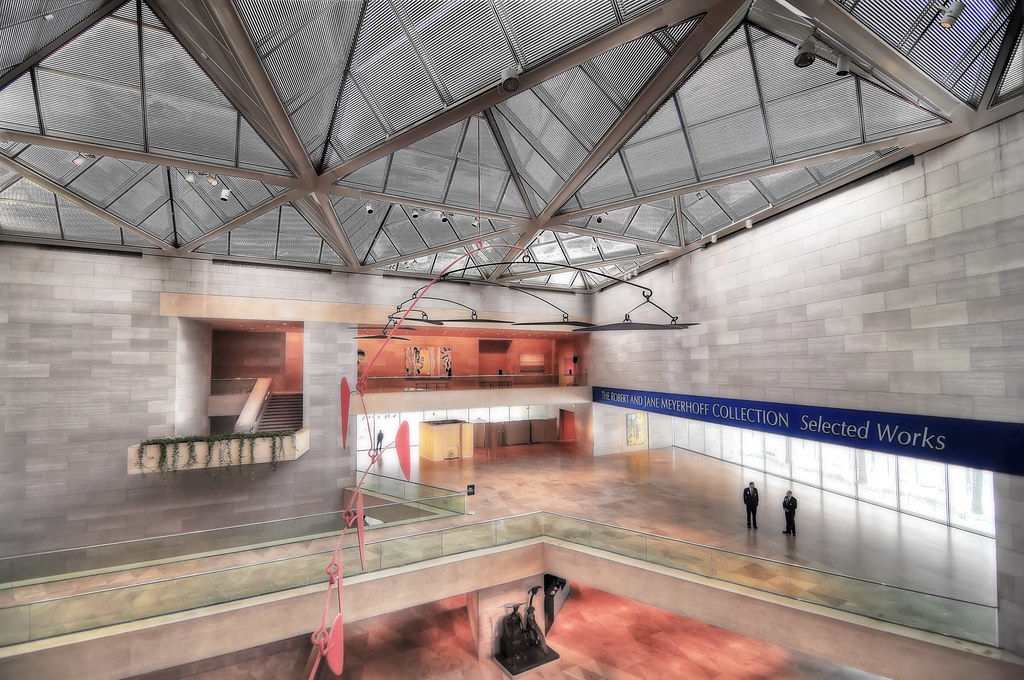First of all, you may see the image above larger on Flickr. Just click it.
I posted an article a while ago about why we don’t need HDR in most situations. Sometimes, it can generate very good images, though. And in those situations, you may want to know how to properly use your tools. So here is a small HDR photography tutorial.
By tools there, I mean the camera, the HDR software and Photoshop. You cannot simply rely on the HDR/Tone Mapping merge for the final result, or you will end up with crappy images like this:
This is probably the worst HDR I have ever done, by the time I was learning the technique. Light is unbalanced, the colors are oversaturated and the effect all-in-all is too strong. It sucks.
So, back to the technique. First, you’ll probably need 3 nearly identical frames which only differ in exposure. You can do that by setting up your camera’s auto-bracketing feature. I usually go for +/-2 EV for HDR. Sometimes, +/-1 EV, depending on light conditions. Using less than that may not generate enough dynamic range; using more may cause a lot of blown highlights and spoil the final result. I also usually go for sane f-stops, like f/4 in a ultra-wide, or f/8 in a prime. And finally, I set my color adjustments as neutral as possible, since I’ll be tinkering a lot with colors later. I rarely use a tripod. I prefer to use fast shutter speeds and a steady hand and then use the tilt-shift correction in Photomatix later.
Speaking of Photomatix, that’s my software of choice for this, as it’s easy to use, and it’s fairly cheap, at $99. You may also use Photoshop CS to create your HDR images, but I find it very counter-intuitive and don’t use that. Using Photomatix is very straightforward: you choose which images you’d like to merge, select some merging options and press a button. Then, you select the Tone Mapping option to generate your Tone Mapped image. In the Tone Mapping screen, there are lots of options to tinker with, and you can ask your best friend Google about them. There are plenty of HDR tutorials on the web and I will not waste storage space and bandwidth with another one, sorry.
After processing the image in Tone Mapping, you will end up with an ugly image like the one above, or like the one below:

That’s the image that came out of Photomatix which I used to create the first photo on this page (the one on Flickr). As you can see, there’s over-saturation in the Red channel and a lot of cyan fringe on the upper right corner. Plus, lights are dull and the ceiling lacks contrast. Also, you can’t see in the small sized picture, but Photomatix amplifies the noise a lot – of course, it’s merging 3 images. So, if I published this one, I’d probably get bashed by my Flickr friends. Or end up with having no friends at all.
So, now your Photoshop skills come into play. For this particular shot, I created three layers: one for the bottom floor, one for the main floor/walls and one for the ceiling. By using layer masks, I independently adjusted color, brightness, contrasts and sharpness for each of the layers. Then I applied a light Orton effect (ask your best friend again if you don’t know what that is and how to do it). Afterwards, I applied a new layer mask to selectively increase brightness to some spots. Finally, I used the Noiseware Professional plug-in for removing that pesky noise introduced by Photomatix and applied a very light Smart Sharpen filter. The end result it the image you first saw on this page.
This is just an example on why you need to post-process any HDR/Tone Mapped images you create. I hope it helps and stimulate your creativity!
For a selection of my HDR images, please click here.

